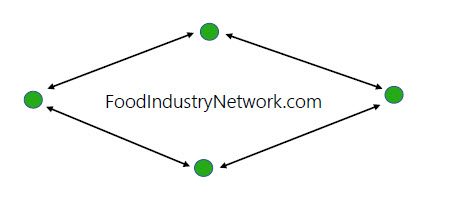High insurance premiums prevent hiring inexperienced AZ drivers

The cost of insuring inexperienced AZ drivers is rising and it’s difficult to find a company willing to insure them.
David Buurma, LaSalle Agri Fertilizer owner, recently asked through Facebook for names of farm insurance companies that would insure his AZ drivers that have little to no commercial experience.
His question cultivated a flurry of responses from those who shared his frustration. Many want and need to hire AZ drivers but struggle to find affordable insurance if the drivers lack three to five years of insured commercial experience or are under 25 years old.
Why it matters: Agricultural-related labour shortages are increasing, especially among qualified and licensed AZ drivers.
An 18-year-old third-generation cattle hauler who invested $10,000 in provincial training and graduated with a 98 per cent test result said he was told his insurance premiums would be approximately $32,000. Another couldn’t get a 450 cube van insured without proof of insured commercial driving and asked how anyone can obtain the required five years of insured driving experience without insurance.
“At the end of the day, the biggest issue right now is finding people to work,” Buurma said. “The more options you have, technically, the more chances you can fill jobs, right?”
He said the market for experienced AZ drivers is competitive and insurance prevents hiring within the 18-to-25-year-old demographic. It leaves him frustrated.
“We want to motivate them (young people), get them in the truck, and start driving,” he said. “So, whatever we can do to get past that hurdle . . . because I’d hire guys all day long to run a commercial truck that were younger.”
Ontario Federation of Agriculture policy analyst Ian Nokes said the past few years have seen a rise in miscommunication between the transportation ministry, Service Ontario, insurance companies and public understanding of their role.
The transport ministry created farm plates so ‘G’ licensed drivers within agriculture could drive commercial vehicles heavier than 11,000 kilograms without obtaining a ‘D’ licence. That weight rating falls within the commercial vehicle operators’ registration (CVOR) of 6,000 to 15,000 kg coverage, which the ministry requires agricultural operators to have for farm plates.
Nokes said obtaining a commercial operator’s registration for farm vehicles can be onerous. However, agriculture businesses are now encountering situations where insurance companies refuse coverage because they don’t understand regulatory exemptions available to the agriculture sector.
“We’ve had insurance companies telling people that they can’t,” he said. “We have to cite all the different regulations, driver’s licence regulations and information for them to understand that, ‘yeah, you’re supposed to be insuring us.’”
Nokes said it’s frustrating when the government agrees farmers can drive commercial vehicles but insurance is complicated to obtain and when the premiums are untenably high.
“We’re aware of these problems and the simple unwillingness of insurance companies (to provide coverage),” he said. “They’re offering it at such an (expensive) level they know you won’t take it.”
Nokes said a portion of the CVOR requirement relates to crossing borders and international travel, which doesn’t apply to most farmers who are moving livestock or grain to market.
“We’ve been trying to work with the ministry of transportation, and they’ve indicated they’re going to review the requirements for the commercial vehicle operators’ registration,” said Nokes.
“Maybe that will be an opportunity for them to look at having a version for farmers because we don’t do international travel. We don’t cross borders.”
Commercial insurance rates have increased significantly over the last three years because, for several years, every line of a commercial insurance company was losing money, said Jack Wilkinson.
Wilkinson, a director for Co-operator’s Insurance and OFA past-president, said the cost of covering a $500,000 truck, a trailer full of goods or environmental spills as a result of a crash could be astronomical, and the premiums reflect the cost and risk factors associated with that licence class.
He said people are quick to complain about rates but slow to engage their insurance agent in a conversation on how to lower premiums. Having that conversation can save a lot of frustration and money.
Wilkinson warned people against pulling their insurance from any company before confirming coverage of equal or better value is available elsewhere.
“Before you take (your business) somewhere else, you want to make sure there is somewhere else,” said Wilkinson. “Because if the individual unilaterally decided to leave and found out no company was interested in insuring drivers with no experience, he would have effectively hurt his company.”
He said a dramatic change in truck drivers’ demographics and lifestyle goals is forcing all sectors to initiate driver retention strategies like pension plans and profit sharing.
The alternative for new drivers could be working at a lower pay scale to offset the premiums the company covers to get the experience they need or start their own business.
“Now you’ve got to match your growth with your employment ability to retain skilled workers,” he said. “There is no simple answer to this. But, if a certain class has a higher frequency of accidents than others, the premium will reflect that.”
Source: Farmtario.com

